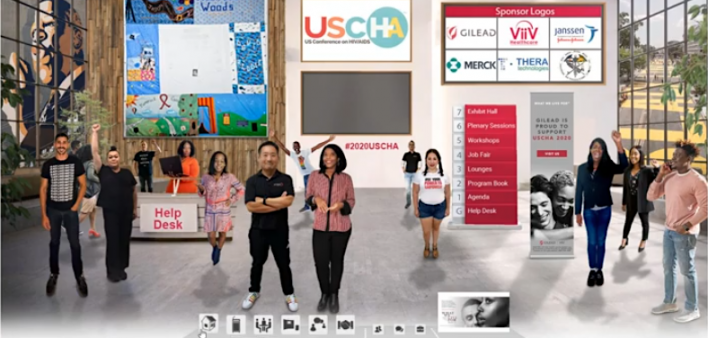Where has the year gone? World AIDS Day, held each December 1, is right around the corner. What’s more, this year’s United States Conference on HIV/AIDS (#2021USCHA), which usually takes place in the fall, will be held virtually December 2 and 3.
That means time is running out to register for the annual conference, which is organized by NMAC, a national organization battling HIV through the lens of race. The deadline to sign up for the standard rate ($295) is Friday, November 5. You can do so at USCHA.life/registration. Youth rates are also available. For future reference, scholarships for the general public are available each year, though the deadline for this year’s event has passed.
Who’s already registered for #USCHA2021? ✋If you haven’t, what are you waiting for? The conference is fully virtual, with workshops & discussions that address the current state of the epidemics & new methods in serving our communities. Register today: https://t.co/Rh7azYzD99 pic.twitter.com/8Y3S16B5sT
— NMAC (@NMACCommunity) October 22, 2021
Curious about what will be discussed at the 2021 conference? The two-day event includes four sessions of workshops (with numerous workshops available each session), plenary discussions and additional sessions dedicated to specific communities (Latinos, men of color and people of faith, for example) and topics such as racism, housing and COVID-19. The agenda, including workshop and poster presentation titles, is available online.
To learn more about NMAC check out the POZ blog by Paul Kawata, the group’s executive director.
World AIDS Day, which has been observed since 1988, also takes place the first week of December. According to HIV.gov, this year’s theme is “Ending the HIV Epidemic: Equitable Access, Everyone’s Voice.” (“El tema de este año para WAD se confirma como: Poner fin a la epidemia de VIH: acceso equitativo, la voz de todos.”)
World AIDS Day is a time not only to bring awareness to HIV—to education, prevention, stigma and treatment—but also to honor those we’ve lost and those working to end the epidemic. Search social media to find events in your community and to see how fellow advocates and organizations have shown support for the day in the past. Visit the POZ #World AIDS Day page for a roundup of related articles and calendar events.
This year’s theme references “Ending the HIV Epidemic: A Plan for America,” the 10-year federal initiative that aims to lower new HIV rates by 75% by 2025 and by 90% by 2030. This would amount to fewer than 3,000 HIV cases a year. “Reducing new infections to this level,” according to the initiative, “would essentially mean that HIV transmissions would be rare and meet the definition of ending the epidemic.” The strategy for reaching these benchmarks involves investing federal funding and resources in 57 key jurisdictions. These are the 48 counties plus Washington, DC, and San Juan, Puerto Rico, that together account for 50% of new HIV cases, plus seven rural states with high HIV burdens: Alabama, Arkansas, Kentucky, Mississippi, Missouri, Oklahoma and South Carolina.
In July, the Centers for Disease Control and Prevention announced $117 million in grants to local and state efforts to support the “Ending the HIV Epidemic” plan. How close is your state to ending its HIV epidemic according to the national plan’s criteria? Find out with the interactive AHEAD dashboard. To learn more about “Ending the HIV Epidemic,” read an overview at HIV.gov and visit the official webpage at HRSA.org. For a related POZ article, see “Plans to End the HIV Epidemic at Home and Abroad.”







Comments
Comments